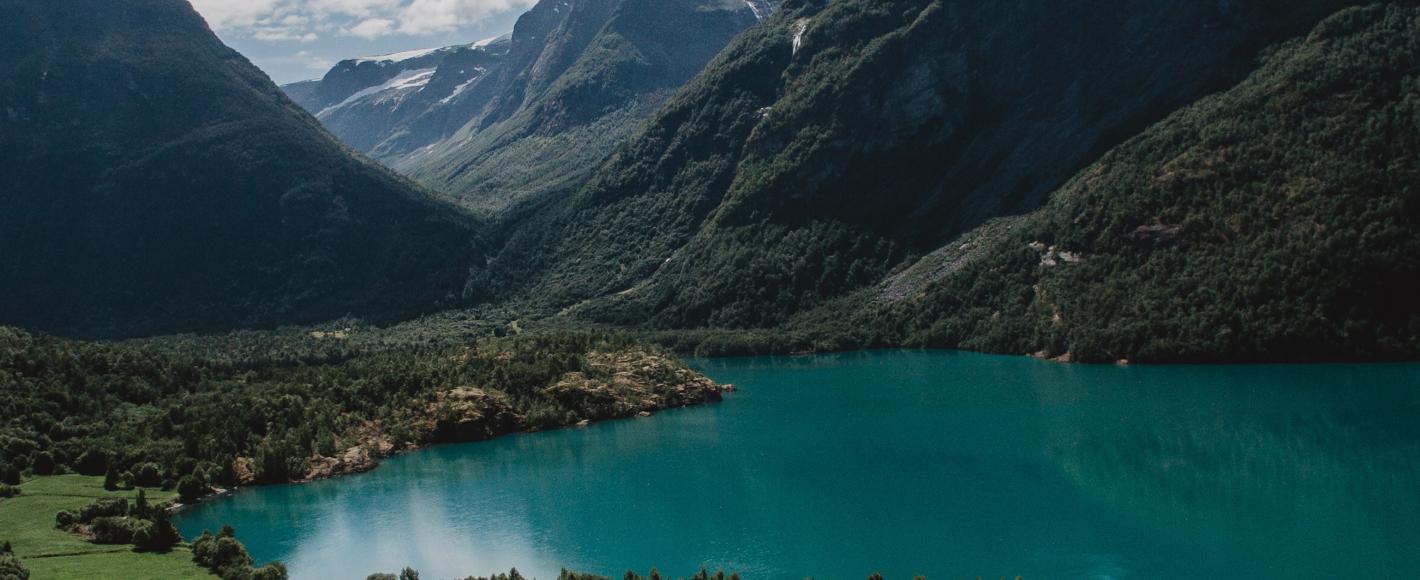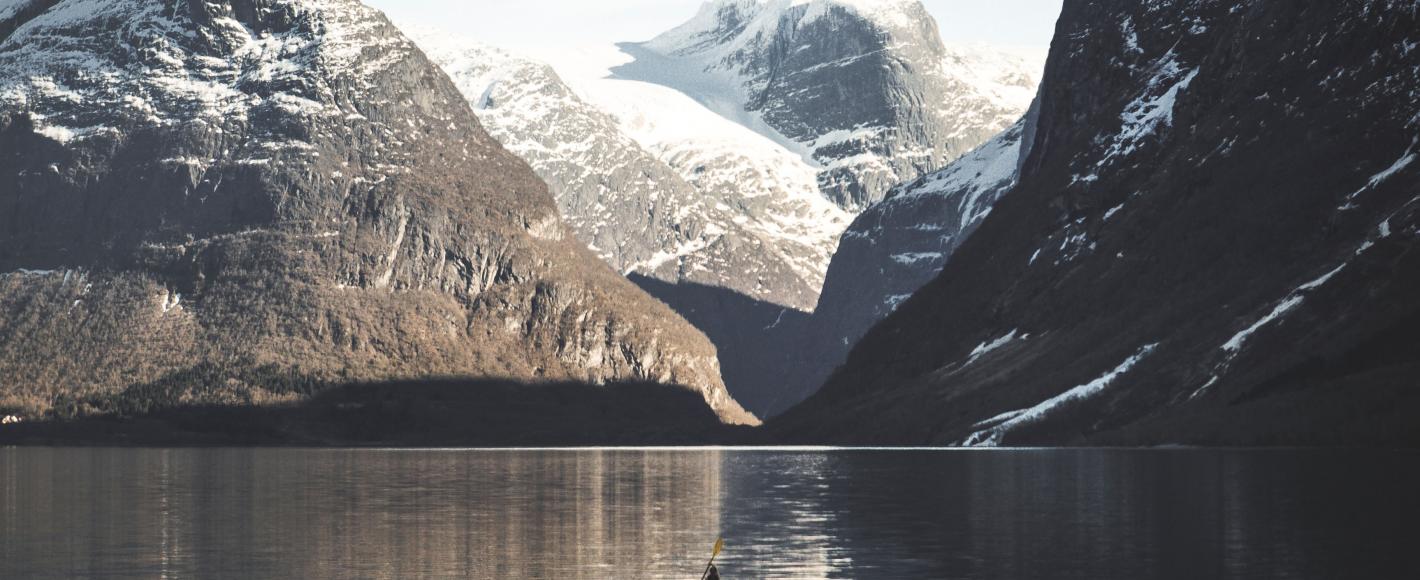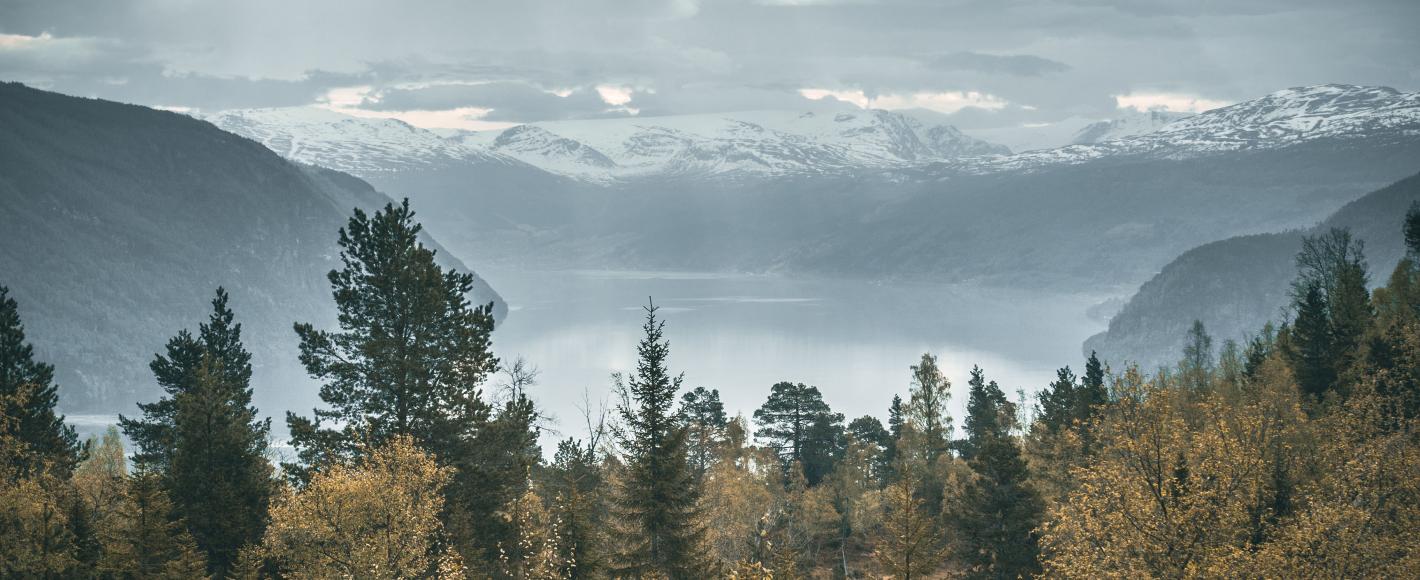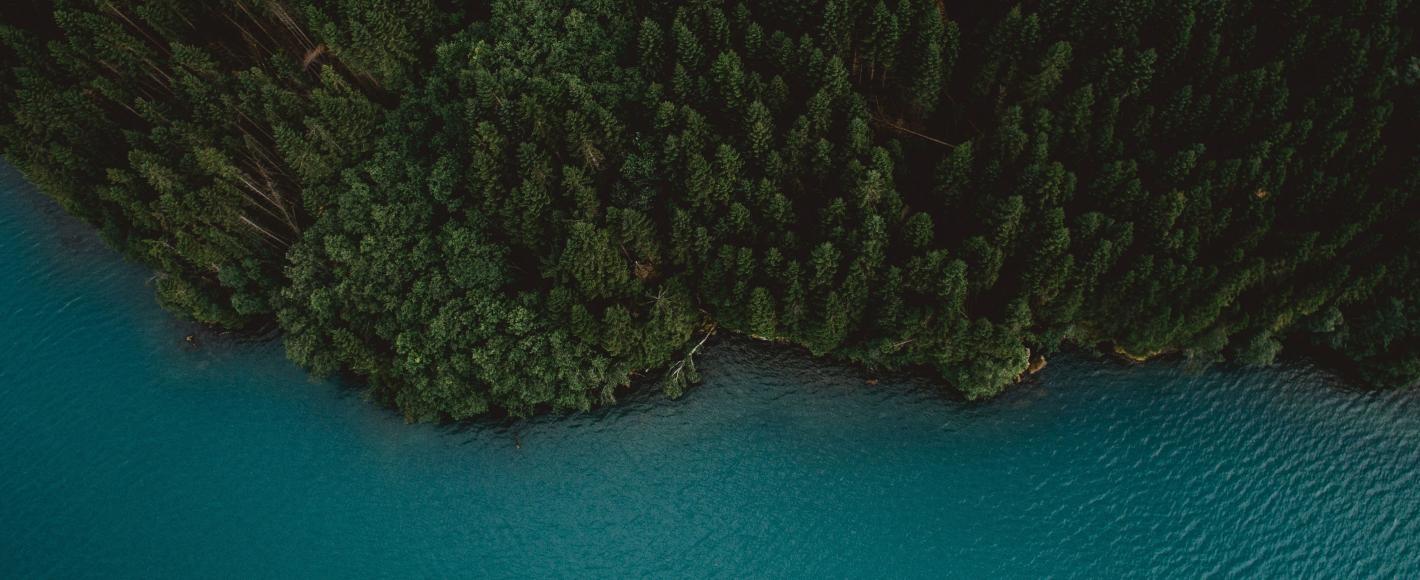The Norwegian fjords are wonders of the world, and one of the most attractive tourist destinations on the planet. The unique fjord landscape has been taking visitors' breath away for more than 100 years. At first glance, it’s not easy to tell the difference between a fjord and a lake. But if you take a closer look, you can see that a fjord is a deep, narrow and elongated body of sea, or water inlet with steep land on three sides. The mouth of the fjord, where it meets the sea, is often shallow. A lake is a depression in the earth’s surface that contains water. Normally, such depressions have been formed with one or more outlets. Precipitation or inflow from rivers and streams make up lakes’ catchments areas.
Glaciers formed our fjords
The fjords have been formed by gigantic glacier tongues that have shaped the landscape through multiple ice ages. A fjord is thus a U-shaped subsea valley, which, in Western Norway, is often surrounded by dramatic mountain landscapes. The glacier arm deposited a terminal moraine of gravel and sand, which formed a subsea barrier, often called ‘fjord thresholds’ or ‘moraine ridges’ where the fjord is more shallow.
This shallow threshold at the mouth of the fjord often makes the fjords calmer than the open sea, and the fjords therefore often form natural harbours.
‘Fjord’ is one of the few Norwegian words to have become international, especially in English where it is used in its Norwegian form. ‘Fjord’ comes from the Norse word ‘fjorðr’ and means ‘crossing point’. ‘Fjord’, which essentially means ‘where you cross’ has the same origin as the Norwegian word ‘ferd’ (journey), and ‘to fare’ in English. The verb ‘fare’ and the noun ‘ferry’ come from the same word.
Our fjord, the Nordfjord, at 106 km is the sixth longest fjord in Norway. The Nordfjord, which extends all the way from the Stadhavet sea to the Jostedalsbreen glacier, has served as one of the main transport routes for people living in the valleys and along the fjord. The longest fjord in the world is Scoresbysundet in Greenland (350 km), however Western Norway can boast the next two places on the list with the Sognefjord (204 km) and the Hardangerfjord (179 km). The Geirangerfjord and the Nærøyfjord are inscribed on the prestigious UNESCO World Heritage List (UNESCO – United Nations Educational, Scientific and Cultural Organization).
If you further explore the fjord landscape, you will realise that it’s all about ‘the history of water’. The fjords were carved out by a massive sheet of ice up to three kilometres thick that covered Northern Europe in a succession of ice ages. On the fjords, you travel in the wake of fishing boats and merchant ships. Most of the landscape has not changed since the Viking longboats set sail for distant shores.
Our lakes
Lakes normally contain fresh water, but some lakes have intake from the sea and thus contain salt water, while others that do not have intake from the sea nonetheless have a salt water layer on the bottom. This is assumed to be the remains of the land uplift after the last Ice Age.
We have many beautiful lakes in Nordfjord, which make for great destinations in themselves or a moment’s peace en route somewhere else. Lovatnet lake in Lodalen is probably the most photographed lake in the region, due to its verdigris green colour, which makes it look like an emerald. Hornindalsvatnet lake, which is the deepest in Northern Europe at 514 metres, is situated approx. half an hour away in Hornindal.
Why are our lakes green?
When the ice and snow melt in spring, the lakes in the region that are close to the glacier change colour from blue to sea-green. This is because the melt water from the glaciers contains silt and small particles of stone that the rivers carry from the glacier to the lakes. When the sun shines on the particles in the lake, they reflect a unique green colour.
The water in the lake is green because of small particles of clay and sand, called silt, which the melt water from the glacier has carried to the lake. This silt is so low-weight that it does not fall to the bottom, but remains in the water and creates this wonderful green colour. Most of the lakes have abundant stocks of trout, which are small but very tasty served with sour cream, potatoes and cucumber salad.
Activities
You can take part in activities on the fjord and lakes such as fishing, RIB boat trips, kayaking, canoeing, rowing a boat, paddle boarding or simply gliding out on an organised and tranquil boat trip.
RELEVANT PRODUCTS





